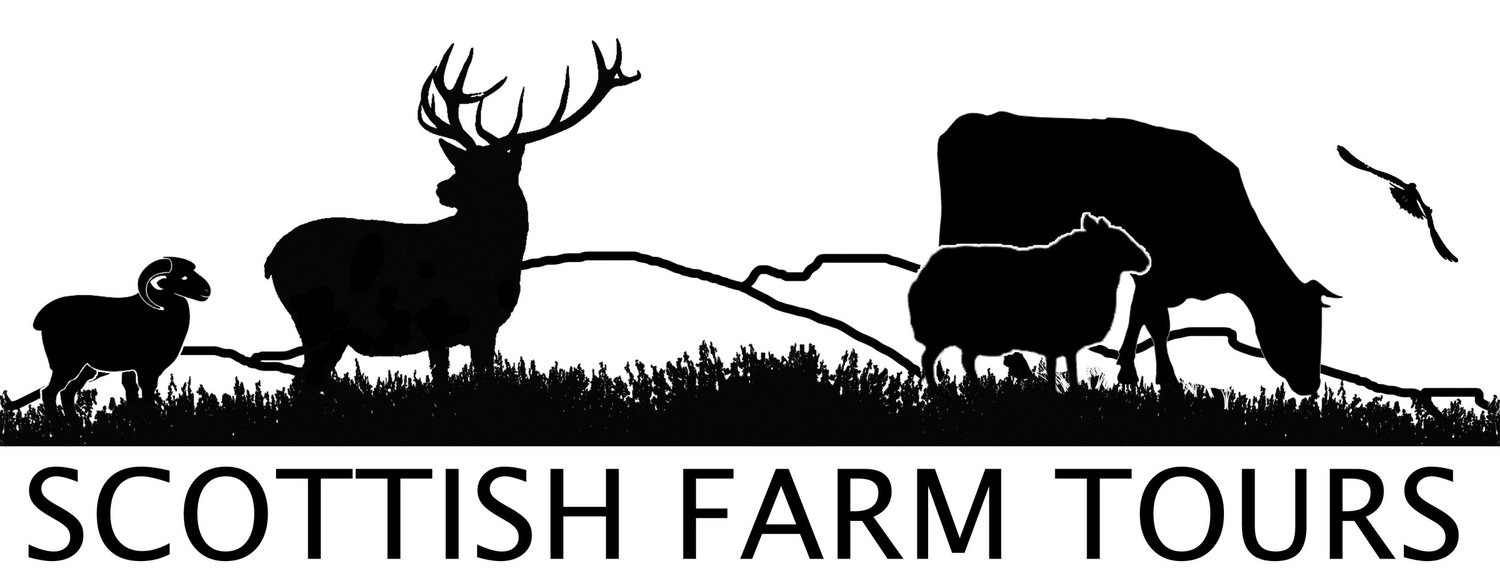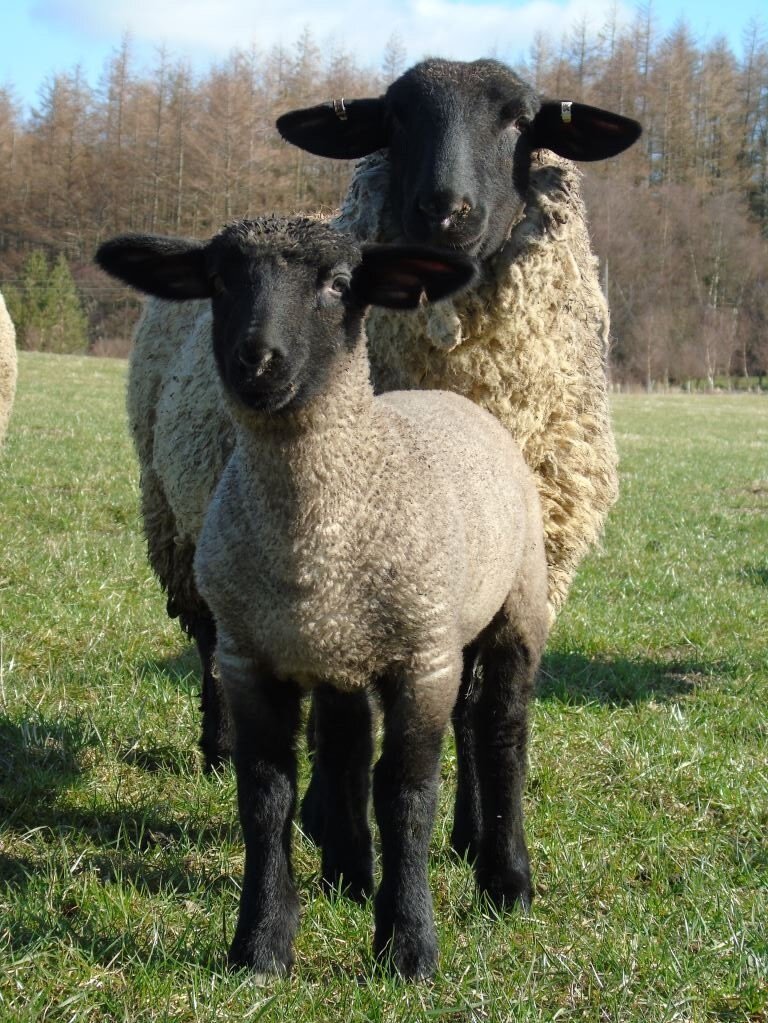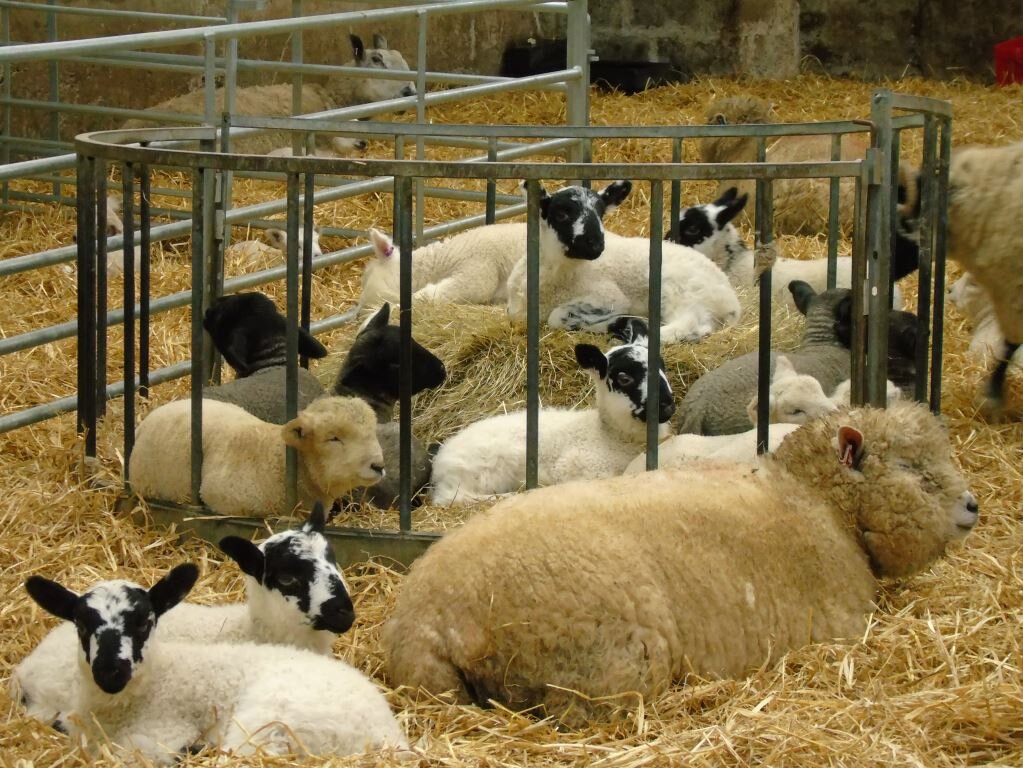I write this in very strange times – the world is a very different place just now due to coronavirus. But work goes on as near to normal as possible on all farms across the country, and ours is no different. At this time of year it is all about feeding sheep and getting ready for the imminent lambing season.
Ewes on the hill waiting for their breakfast
This year we bought a new piece of kit – a second hand bale unwinder – and we are impressed already by the difference it is making to sheep health. Instead of one bale of silage in a ring feeder in the middle of the fields, this machine goes on the back of the tractor, and unravels the bale as you drive along, so that it leaves a trail of silage across the field. With the old ring feeders we found that the greedy dominant ewes hung around the feeder all day, getting over fat and blocking access to the weaker less dominant ewes, who then wouldn’t get the feed they needed to maintain them and their developing lambs, and would lose too much body condition prior to lambing. With the bale unwinder every ewe gets equal chance to eat, and another bonus is that they don’t stand in mucky conditions to feed as we can change the feed site every day.
Bale unwinder in action
Silage laid out so every ewe can get access to eat
On a day like this they are glad to see food!
Fine job on a nice day!
Snow doesn’t seem to bother this Icelandic ewe…
But Ruby the Ryeland finds it a bit of a nuisance!
We are all set for the main lambing starting in a few days. Ewes have been vaccinated (against clostridial diseases, so that they provide immunity to the lambs via the first milk, or “colostrum”), they have been wormed (to stop a rise in worm burden on the pasture post-lambing), and split into their groups according to how many lambs they are carrying ( they were scanned in February), and when they are due to lamb (we can tell this by the colour of crayon left by the tup’s raddle on their rear ends).
See the different raddle colur marks on the ewes rear ends
While all this was going on we were also busy lambing the pedigree sheep – they lamb from February onwards, so the lambs are bigger for selling or showing. First lamb of 2020 was this Suffolk lamb on 15th February.
First lamb born…
…and look at him now!
The Ryelands have all lambed, and for the first time we had two coloured lambs (change of genetics with a new tup which obviously carries some coloured genes!) And the bluefaced leicesters have been very busy – with several sets of triplets and two sets of quads!
Ryeland with coloured lamb - her other lamb was white
Blackface with mule lamb - we lamb a few of these early hoping that some of the lambs will be suitable for showing
Cheeky Suffolk lamb
Lamb creche....in the hay feeder.
Ryeland lamb
Spring is well and truly here now, and the farm echoes to the beautiful sound of visiting birds – oystercatchers , lapwings, curlews, redshank, snipe, golden plover, skylarks can all be seen and especially heard.
Oystercatcher
And in the ponds, the frogs and toads have been extremely busy…
Good morning!
Lots of spawn
We hope that you all stay safe in these difficult times and we are able to welcome visitors to the farm later in the year.
And to finish – the all-important canine team!



















